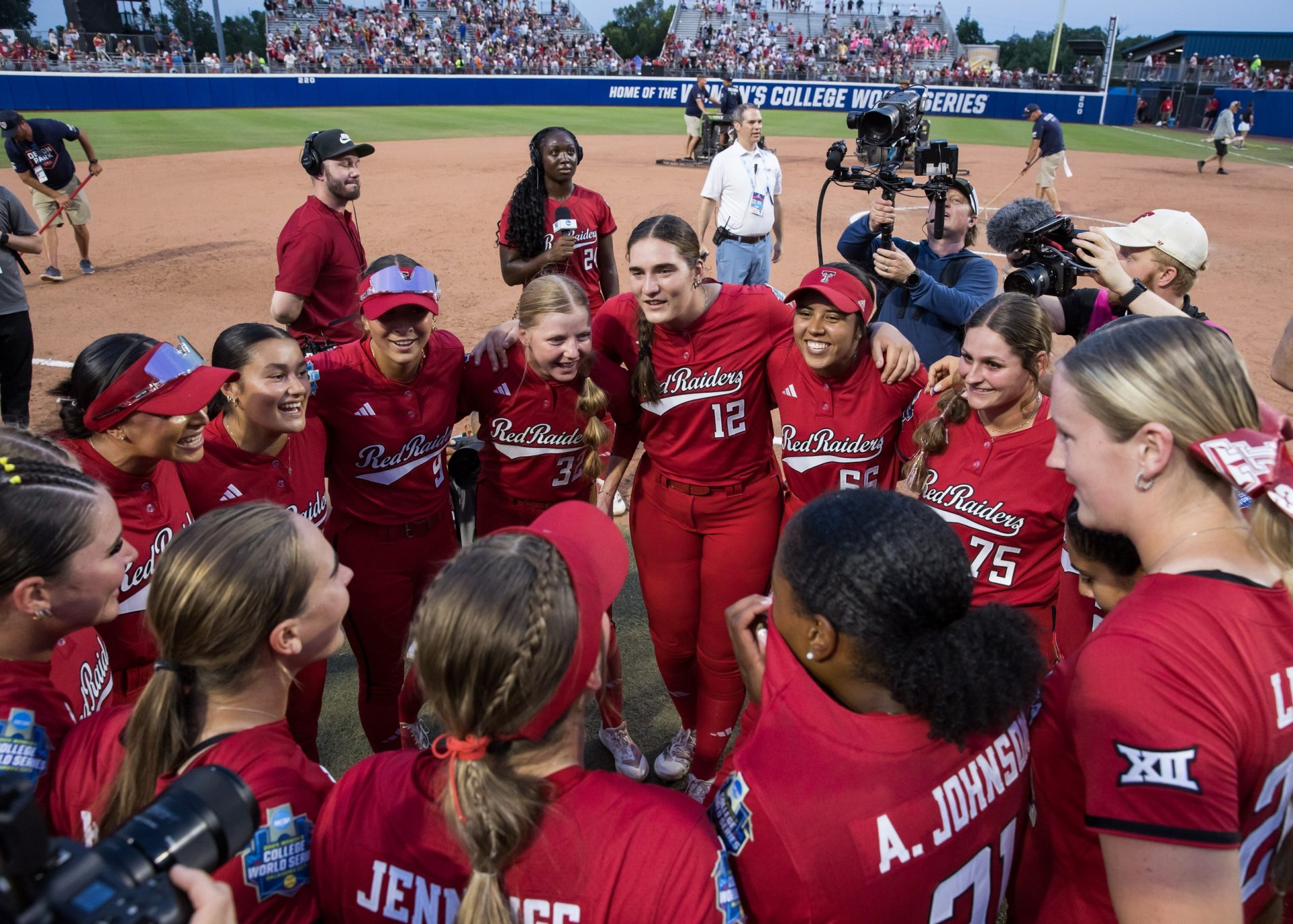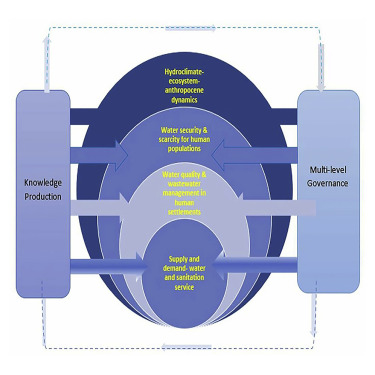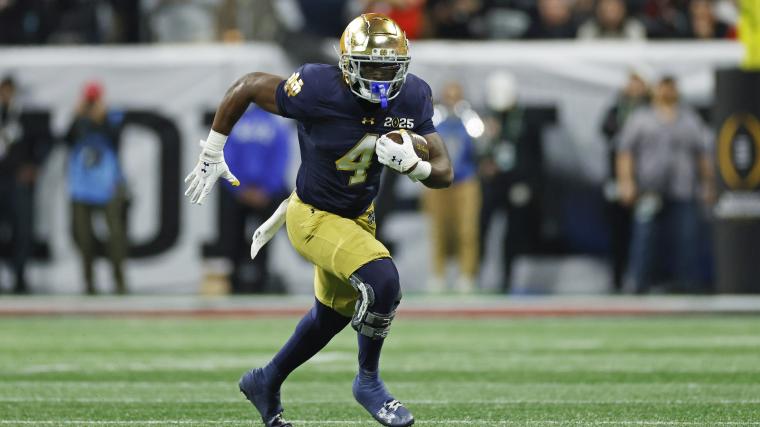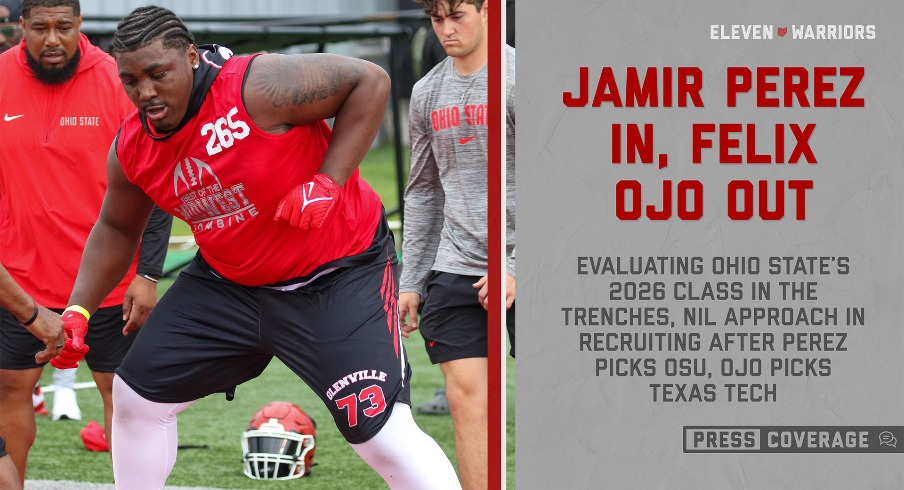The College Football Playoff will almost certainly expand again in 2026, going from a 12-team format to a 14- or 16-team format. While we don’t know which of these it’ll be, it’s always fun to think about what things could look like.
In the most recent episode of “The Joel Klatt Show: Big Noon Conversations,” Big Ten commissioner Tony Petitti broke down how discussions over the CFP expansion are going, as he holds a key role. He also shared that he’s seeking more meaningful games in the CFP expansion and believes that a 16-team format could help accomplish that.
“Bigger is better,” Petitti said. “I think 12 is not enough teams given the size of the teams that are competing. You look at professional leagues, they [have] somewhere between 40% and 50% of their teams qualifying for the postseason. We’re way below that, even at 16. I think we want to be really careful.”
As Petitti potentially seeks a 16-team CFP, the determination of which 16 (or 14) teams would qualify is still up for debate. Automatic qualifiers would likely be involved in some form or fashion.
So, let’s see how the proposed formats for the CFP expansion could have impacted last year’s field, with the consideration that the CFP has already gone to a straight seeding model after last year.
4+4+2+2+1+3 format
In this format of the 16-team model, the Big Ten and the SEC would’ve received four automatic bids to the CFP, while the ACC and Big 12 each would’ve received two. There also would’ve been an automatic spot for the highest-ranked Group of 5 conference champion and three at-large bids. With the idea of a conference championship weekend being thrown out there as an extension to the CFP expansion, we used the standings for the four major conferences to help determine which teams would have received those automatic qualifying spots.
In the Big Ten, both Oregon and Penn State would’ve received an automatic bid, as they had the two best conference records in the regular season. The other two games in the Big Ten during conference championship weekend would have been Illinois (No. 6 in the Big Ten standings) at Indiana (No. 3 in the Big Ten standings) and Iowa (No. 5 in the Big Ten standings) at Ohio State (No. 4 in the Big Ten standings). The winner of those two games would’ve received the two automatic bids. In this practice, let’s presume that Indiana and Ohio State win their respective games.
In the SEC, both Georgia and Texas would’ve received an automatic bid, as they had the two best conference records in the regular season. The other two games in the SEC would’ve been South Carolina (No. 6 in the SEC standings) at Tennessee (No. 3 in the SEC standings) and LSU (No. 5 in the SEC standings) at Alabama (No. 4 in the SEC standings). Just like the Big Ten, the winners of those games would’ve received the conference’s two other automatic bids. So, let’s presume the favorites of those games win, meaning Tennessee and Alabama advance.
As for the ACC and the Big 12, it isn’t exactly known what their conference championship weekends would look like. The ACC recently mentioned an idea where it could have its regular-season conference champion get a bye that week, meaning the second- and third-place teams in the regular-season standings play for the conference’s other automatic berth.

For the sake of this exercise, let’s send the two teams who finished No. 1 and No. 2 in the regular season standings for the ACC and Big 12 to the CFP. That would mean SMU and Clemson would advance out of the ACC, while Arizona State and Iowa State would’ve advanced out of the Big 12. Boise State was the highest-ranked Group of 5 conference champion, receiving the No. 9 ranking in the final CFP poll. That was an easy one to figure out.
As for the three at-large spots, that’s where things might get a little tricky. Notre Dame was ranked fifth in the final CFP poll, meaning it would’ve likely occupied one of these at-large bids. If we went by the rankings, Miami (Fla.) and Ole Miss would’ve received the final two at-large spots. However, neither of those teams would’ve played in conference championship weekend during this exercise, leading to some potential murkiness with assembling the field. For now, let’s send Miami and Ole Miss to the CFP.
Here’s how that 16-team field would’ve looked under that format, using the final CFP rankings:
- Oregon
- Georgia
- Texas
- Penn State
- Notre Dame
- Ohio State
- Tennessee
- Indiana
- Boise State
- SMU
- Alabama
- Arizona State
- Miami (Fla.)
- Ole Miss
- Clemson
- Iowa State
First two teams out: South Carolina, BYU
One of the ideas being thrown out there for the 16-team CFP is for the top two seeds to get a double bye and a play-in round between the No. 13-16 seeds. That would mean Miami would host Iowa State, which was the Pop-Tarts Bowl matchup this past season, and Ole Miss would host Clemson. As for second-round matchups, Ohio State would’ve hosted Alabama and Notre Dame would’ve hosted Arizona State. Oregon also would’ve avoided Ohio State in the quarterfinals thanks to the straight seeding.
5+11 format
This is probably the easiest of the five formats to understand. In this format, the five highest-ranked conference winners plus the 11 highest-ranked at-large teams would’ve received a berth into the 2024 CFP.
Here’s how that would’ve looked like:
- Oregon
- Georgia
- Texas
- Penn State
- Notre Dame
- Ohio State
- Tennessee
- Indiana
- Boise State
- SMU
- Alabama
- Arizona State
- Miami (Fla.)
- Ole Miss
- South Carolina
- Clemson
First two teams out: BYU, Iowa State
In the possible scenario that there’s a “play-in weekend,” we would’ve seen two conference matchups taking place. Miami would’ve hosted Clemson after the Tigers won the ACC Championship Game, while Ole Miss would’ve hosted South Carolina. This format would’ve really only changed the last two seeds from the previous format, with South Carolina taking Iowa State’s spot in the field. That would’ve left the Big 12 with just one team in the tournament.
4+4+2.5+2.5+1+2 format
This format is similar to the first format we mentioned. The only difference is that there would’ve been one more automatic bid for an ACC team or the Big 12 would receive a third automatic bid, depending on which conference’s third-place team is ranked higher. As a result, there would’ve been one fewer at-large spot.
For the sake of brevity, let’s assume that the same eight teams from the Big Ten and the SEC in the first format receive the eight automatic bids between the two conferences in this format. Let’s also assume SMU, Clemson, Arizona State and Iowa State also receive the first two automatic bids from their respective conferences, the ACC and the Big 12.
That would leave Miami and BYU as the two third-place teams from the ACC and the Big 12 seeking the other automatic qualifying spot. Miami was the higher-ranked team of the two (No. 13 to BYU’s No. 17 ranking), meaning the Hurricanes would advance to the CFP. But if the CFP really wanted to get creative, it could have the third-place teams in the ACC and the Big 12 go head-to-head for this spot.
Again, Boise State was the highest-ranked Group of 5 conference champion, so it would’ve received a spot in this format. Notre Dame was ranked fifth in the final CFP poll, so it likely would’ve been given one of the last at-large bids. Ole Miss would’ve been the second-highest ranked non-automatic-qualifying team, likely giving it a berth in the CFP.

Cam Ward and the Miami Hurricanes would’ve almost certainly made the College Football Playoff if it was a 16-team field, regardless of the format. (Al Diaz/Miami Herald/Tribune News Service via Getty Images)
Here’s what the 16-team field would’ve looked like in this format:
- Oregon
- Georgia
- Texas
- Penn State
- Notre Dame
- Ohio State
- Tennessee
- Indiana
- Boise State
- SMU
- Alabama
- Arizona State
- Miami (Fla.)
- Ole Miss
- Clemson
- Iowa State
First two teams out: South Carolina, BYU
This format would’ve produced the exact same 16 teams and seeds as the first format we mentioned. The big difference is that the slight tweak would’ve given Miami an automatic bid, as none of the other formats would’ve given the Hurricanes a guaranteed spot in the field last season. It also would’ve given some more stability to the ACC or the Big 12, as their respective conferences’ third-place team typically isn’t ranked in the top 10 of the final CFP poll.
4+4+3+3+1+1 format
In this proposed format, the ACC and the Big 12 would each get three automatic qualifiers, while the Big Ten and the SEC would still get four. There would also be an automatic qualifier for the highest-ranked Group of 5 conference champion to go along with one at-large bid.
As with the other two examples where the Big Ten and the SEC get four automatic qualifiers, we’ll assume the same eight teams make it into the field via the conference championship weekend. How the ACC and the Big 12 would determine their three automatic qualifiers in this scenario is anyone’s guess, but the simplest way would be to have the top two teams in each conference in the regular season occupying two of those spots, while the third would be determined through a play-in game. If the higher-ranked team won those games, we’d have SMU, Clemson and Miami representing the ACC, while Arizona State, Iowa State and BYU would get the Big 12’s three automatic qualifiers.

Jalen Milroe, Kalen DeBoer and Alabama could’ve made the College Football Playoff last season in an expanded field. (Photo by Brian Bahr/Getty Images)
Again, Boise State would be the Group of 5 representative and Notre Dame would likely occupy the lone at-large spot.
Here’s how the field would’ve like in this scenario:
- Oregon
- Georgia
- Texas
- Penn State
- Notre Dame
- Ohio State
- Tennessee
- Indiana
- Boise State
- SMU
- Alabama
- Arizona State
- Miami (Fla.)
- Clemson
- Iowa State
- BYU
First two teams out: Ole Miss, South Carolina
The big difference in this format is Ole Miss wouldn’t qualify for the CFP because it didn’t finish in the top six of the SEC, nor was it the highest-ranked remaining team for an at-large spot. A potential play-in weekend in this scenario would’ve featured two ACC-Big 12 battles, while the top 12 seeds remain consistent with the other three formats we’ve gone over so far.
14 team format: 4+4+2+2+1+1
While it seems unlikely, a 14-team format is still on the table for the latest round of CFP expansion. The most common format for a 14-team playoff features four automatic bids for the Big Ten and the SEC, while the ACC and the Big 12 get two apiece. The highest-ranked Group of 5 conference champion would also get an automatic bid, while there would be an at-large bid for the highest-ranked remaining team.
This format is comparable to the first format we mentioned; it just has two fewer at-large bids. So, the four teams representing the Big Ten and the SEC would remain the same in our practice scenario. The same goes for the ACC (SMU and Clemson) and the Big 12 (Arizona State and Iowa State), but as we mentioned earlier, it’s unclear what each of those conferences would likely do for a conference championship weekend if it had two automatic bids.

Big Ten commisioner Tony Petitti could help his conference receive four automatic bids in the next round of College Football Playoff expansion. (Photo by James Black/Icon Sportswire via Getty Images)
Just like the other formats, Boise State (highest-ranked Group of 5 champion) and Notre Dame (highest-ranked at-large team) would also make the field.
Here’s how a potential 14-team CFP format would’ve looked like last season:
- Oregon
- Georgia
- Texas
- Penn State
- Notre Dame
- Ohio State
- Tennessee
- Indiana
- Boise State
- SMU
- Alabama
- Arizona State
- Clemson
- Iowa State
First two teams out: Miami, Ole Miss
The top 12 seeds in this format would’ve remained the same compared to the other four formats, but this is the first format that doesn’t include Miami.
A play-in weekend also wouldn’t be possible in a 14-team format. Oregon and Georgia would’ve received first-round byes as the other 12 teams duked it out. Some of those first-round matchups would’ve included a game between former Big 12 foes (Iowa State-Texas), Clemson making the trip up to Happy Valley to take on Penn State and Alabama facing Ohio State.
Want great stories delivered right to your inbox? Create or log in to your FOX Sports account, follow leagues, teams and players to receive a personalized newsletter daily.

Get more from College Football Follow your favorites to get information about games, news and more










 Follow The Sporting News on WhatsApp
Follow The Sporting News on WhatsApp
























































